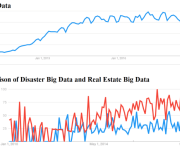Polymesh Network: Bringing Tokenization to Real-World Assets in Real Estate
The advantages of blockchain have become known to the world in the last ten years, leading to a range of applications, most notably in real estate. The tokenization of real estate has become the talk of the financial world, with small investors and large institutions alike jumping on the opportunity to digitally secure their assets. That said, real estate deals themselves are challenging, and linking physical assets to the virtual landscape can amplify the confusion. When it comes to the real estate tokenization infrastructure, the built-specific blockchain, like Polymesh, is better as it delivers more confidence to investors and issuers of real worldassets with less. In this article, we’ll delve into why these large institutions like Blackrock and JP Morgan are turning to tokenization to secure their assets and what companies are offering the easiest and safest way to do so.
Higher Liquidity
Traditional markets need more efficiency in financial recording, resulting in lengthy settlements and increased expenses. There needs to be interoperability between multiple systems. It is where real-world asset tokenization comes into the limelight and resolves the fractionalized liquidity via interoperable real-world tokenized assets. Tokenization is beneficial for traditional illiquid assets as it enhances their liquidity. With real-world asset tokenization, assets can be documented in fractional ownership and access extensive markets and exchanges. It reduces or eliminates the need for expensive intermediaries, amplifies the buyer pools, and keeps the value of the real-world tokens intact.
Better Accessibility
Several top-notch assets are out of reach to the issuers or investors because of multiple regulatory and financial limitations. For example, financing a movie demands significant upfront costs, and there is a risk of over-budget in the production crew. In such a situation, there is a pricing out of everything except the wealthy investors. A successful film earns the ROIs multiple times over a short period. Other high-end return examples include renting a multifamily real estate property. In such a case, the benefits of tokenizing real world assets are similar to crowdfunding. Investors are purchasing and funding assets and reaping financial rewards for participating in blockchain technology. Tokenization allows small investors to invest in high-value, real-world assets with low capital and reap ROIs.
High Regulatory Compliance and Cost-Effectiveness
In polymesh blockchain technology, complex compliance regulations and rules are directly programmed into real-world assets at the protocol layers to facilitate applications. The compliance on the Polymesh network functions in combination with a Unique Identity System KYC features. The features preserve the privacy of the users and maintain regulatory compliance.
Because of self-regulating and independent protocols, there are no sources of human interference and errors. With less or no manual labor, the transactions are quicker, less risky, and reduced costs.
Higher Transparency and Reliability
Several high-value assets need more reliable and transparent information regarding sale history, ownership history, ROIs, and metrics to execute informed decisions in the blockchain network. It is more acute when assessing foreign, high-value, real-world assets or in cases where buyers cannot evaluate an asset before purchasing or investing anything personally. The advantage of tokenizing, with Polymesh real world assets in particular, is that it enables open monitoring, tracking, and auditing of the financial records. With tokenization, investors keep track of ownership and ROIs based on the Smart Contract fundamentals of real-world assets.
Composability
One of the promising advantages of real-world asset tokenization is linking the asset value to the composability of the DeFi landscape. The decentralized capital market surrounding the tokenized assets allows participants to acquire a significant percentage of equity in the interest yield from off-chain collateral. It amplifies the liquidity of the DeFi ecosystem and, at the same time, renders retail investors access to an investment class that is otherwise challenging to access. Furthermore, asset tokenization delivers a wide range of scopes for Smart Contract developers leveraging the benefits of real-world asset values.
Conclusion
Tokenization of real-world assets through Polymesh blockchain technology documents a well-structured path toward making assets more accessible, beneficial, and valuable. Further, it creates an ecosystem that augments their use within the DeFi landscape. At the pivotal point of its success and long-term potential are tokenization’s multiple benefits to non-tokenized assets. Tokenization amplifies liquidity, provides immense accessibility to otherwise restricted investment scopes, higher transparency, and reduces administration costs or expenses. With advanced technology and tools, the Polymesh real world assets are changing the tokenization landscape.
























